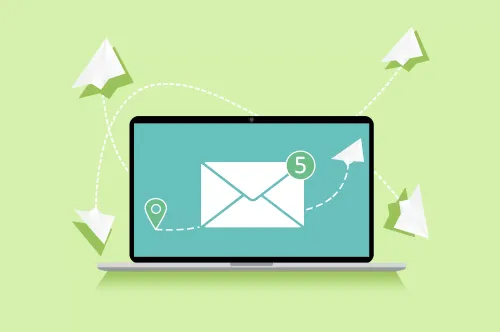Managing email bounce rates and ensuring the cleanliness of your email lists are essential for maintaining a healthy email deliverability rate. To simplify the process of checking bounced emails and improving list hygiene, various email bounce checker tools have been developed and made available on GitHub. These tools leverage powerful algorithms and APIs to identify and handle bounced emails effectively. In this comprehensive guide, we will explore the significance of email bounce checking, explain how email bounce checker tools on GitHub work, recommend popular tools and libraries, and provide actionable tips to improve your email deliverability and list management practices.
The Importance of Email Bounce Checking

Email bounce checking plays a critical role in maintaining a high email deliverability rate and managing the health of your email lists. By implementing an email bounce checker, you can:
1. Identify Bounced Emails
An email bounce checker helps identify bounced emails by analyzing the bounce notifications received from email servers. It categorizes bounces into different types, such as hard bounces (permanent failures) and soft bounces (temporary failures), allowing you to take appropriate actions.
2. Improve Email Deliverability
By regularly checking and handling bounced emails, you can improve your email deliverability. Removing bounced email addresses from your recipient lists helps maintain a clean and engaged audience, minimizing the risk of being flagged as spam or experiencing delivery issues.
3. Enhance List Hygiene
Email bounce checking is crucial for list hygiene. It enables you to identify and remove invalid or non-existent email addresses, reducing the chances of sending emails to inactive or unengaged recipients. This helps optimize your email campaigns and improves overall engagement.
How Email Bounce Checker Tools on GitHub Work

Email bounce checker tools on GitHub leverage different techniques and APIs to check bounced emails effectively. Here's a general overview of how these tools typically work:
1. Email Server Integration
Email bounce checker tools integrate with email servers or utilize APIs provided by email service providers to receive bounce notifications. They establish a connection to the server or API, authenticate the necessary credentials, and retrieve the bounce data.
2. Bounce Classification
Once bounce notifications are received, the email bounce checker analyzes the bounce data and classifies bounces based on their types. This classification helps distinguish between hard bounces (permanent failures) and soft bounces (temporary failures).
3. Actionable Insights
Email bounce checker tools provide actionable insights and reports based on the bounce data. These insights include detailed information about bounced email addresses, bounce reasons, and recommendations for list management and email deliverability improvement.
Recommended Email Bounce Checker Tools on GitHub

Several popular email bounce checker tools and libraries are available on GitHub. Here are some widely used and reliable options:
1. Bounceless
Bounceless is an email bounce checker tool that is available on GitHub. It provides a comprehensive set of features to analyze and handle bounced emails, including bounce categorization, bounce reason identification, and recommendations for managing email lists..
2. BounceHandler
BounceHandler is a Python library available on GitHub that allows you to handle bounced emails programmatically. It provides functions and classes to parse bounce notifications, extract relevant information, and automate the process of handling bounces.
3. Email Verifier
Email Verifier is a versatile email validation and verification library on GitHub. It includes features to check email deliverability, identify bounced emails, and validate the existence of email addresses. It offers integrations with popular email service providers and has an extensive set of APIs.
4. Bounce Detective
Bounce Detective is a Ruby gem available on GitHub that helps detect and handle bounced emails. It provides a straightforward interface to process bounce notifications, extract relevant information, and take actions based on the bounce categorization.
Tips for Effective Email Bounce Checking
To maximize the effectiveness of your email bounce checking efforts, consider the following tips:
1. Regular Monitoring
Regularly monitor bounce notifications and run your email bounce checker tool to identify bounced emails promptly. Timely action allows you to maintain list hygiene, improve email deliverability, and ensure your email campaigns reach the intended recipients.
2. Implement Automated Processes
Automate your email bounce checking process by integrating it with your email service provider's APIs or using specialized libraries. Automation saves time and ensures consistent handling of bounced emails, reducing manual efforts and potential errors.
3. Segment Bounced Email Addresses
Segment bounced email addresses based on bounce types (hard bounce, soft bounce) and bounce reasons. This segmentation helps you tailor your list management strategies, such as removing hard bounces immediately and re-engaging with soft bounces.
4. Improve List Acquisition Practices
Implement effective list acquisition practices to minimize the inclusion of invalid or low-quality email addresses in your recipient lists. By starting with a clean and engaged audience, you can reduce the likelihood of encountering high bounce rates.
Conclusion
Effective email bounce checking is crucial for maintaining a healthy email deliverability rate and managing the quality of your email lists. By leveraging email bounce checker tools on GitHub, you can identify bounced emails, improve email deliverability, and enhance list hygiene. Consider using recommended tools and libraries, regularly monitor bounce notifications, and implement automation to streamline the bounce handling process. Follow best practices for list management and list acquisition to ensure a clean and engaged audience. Implementing email bounce checker tools and incorporating robust bounce handling strategies will optimize your email campaigns and drive better engagement and results.



